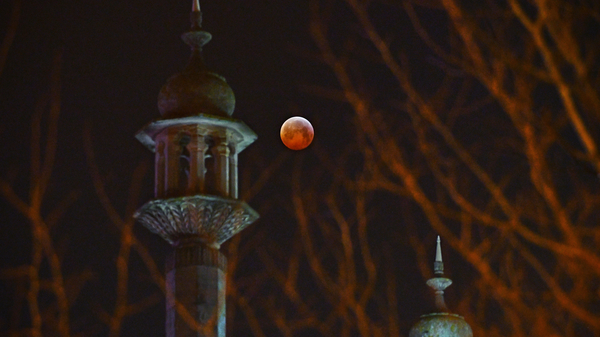What Is a Tetrad?
Every so often, there are four total lunar eclipses in a row. At timeanddate.com, we also use the term “super tetrad” for a rare sequence of four consecutive total lunar eclipses plus four total or annular solar eclipses.

In 2021-2022, there was almost—but not quite—a tetrad.
©iStockphoto.com/oversnap
Every six months or so, there is an eclipse season. Generally speaking, each season contains a pair of eclipses: a lunar eclipse at Full Moon, and a solar eclipse at New Moon.
The lunar eclipse can be total, partial, or penumbral; the solar eclipse can be total, annular, hybrid, or partial. The nature of each eclipse depends on the alignment of the Earth, Moon, and Sun, as well as the distances between them.
Tetrads: 4 Total Lunar Eclipses
A tetrad is a phenomenon where four consecutive eclipse seasons each contain a total lunar eclipse. In other words, it is four “Blood Moons” in a row, about six months apart. The term comes from the Greek word tetras, which means a group of four.
Tetrads are not particularly rare, although they come in interesting cycles of around 600 years. For about 300 years, there are no tetrads at all. This is followed by a period of roughly 300 years where a tetrad occurs every 15 years or so.
At the moment, we are about halfway through the second half of this cycle. The last tetrad took place in 2014-2015; the next will happen in 2032-2033.
There was almost a tetrad in 2021-2022, with total lunar eclipses on May 26, 2021, May 16, 2022, and November 8, 2022, and a big partial lunar eclipse on November 19, 2021. The magnitude of the partial eclipse was 0.97—although this was a fraction short of being total, it looked very similar to a total eclipse, and the Moon acquired a noticeably reddish tint.
“Super Tetrads”: 4 Total Lunar + 4 Total/Annular Solar Eclipses
At timeanddate.com, we have given the name “super tetrad” to another phenomenon: four consecutive eclipse seasons that each contain a total lunar eclipse plus a total or annular solar eclipse.
In other words, it is a series of eight full eclipses in a row—no partials or penumbrals—over a period of about 18 months.
A “super tetrad” is extremely rare. So far, in our data, we have only found two: 2043-2044, and 3707-3708. The dates for the 2043-2044 occurrence are as follows.
- March 25, 2043: Total lunar eclipse
- April 9, 2043: Total solar eclipse
- September 19, 2043: Total lunar eclipse
- October 3, 2043: Annular solar eclipse
- February 28, 2044: Annular solar eclipse
- March 13, 2044: Total lunar eclipse
- August 23, 2044: Total solar eclipse
- September 7, 2044: Total lunar eclipse
Three Small Solar Eclipses, and a Big One
The first three solar eclipses in the 2043-2044 “super tetrad” are small: the Moon's dark umbral or antumbral shadow only just grazes Earth. (In technical language, the 2043 solar eclipses are called non-central eclipses, because the center of the Moon's shadow misses Earth. The February 2044 solar eclipse is a central eclipse with no southern limit: although the center of the Moon's shadow strikes Earth, part of the antumbra misses Earth.)
The final solar eclipse in the sequence is a much bigger event: totality will be visible along a path that begins in Greenland, crosses northern and western Canada, and ends around sunset in Montana, North Dakota, and South Dakota.
Where to see the August 2044 total solar eclipse
Although the date of the eclipse based on UTC time is August 23, 2044, totality will take place on the evening of August 22, local time. There are two large cities on the path of totality: Edmonton and Calgary in Alberta, Canada.



































































